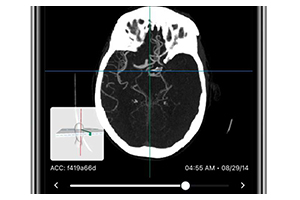
Authors: Niigata University
Source: Medical Xpress
Our movements are controlled by multiple neural pathways that connect the brain and spinal cord. In particular, neurons in the cerebral cortex send commands to the motor neurons in the spinal cord and then to the muscles, thus eliciting the required movement. This flow of neural information is compromised in amyotrophic lateral sclerosis (ALS)—a widespread progressive neurodegenerative disease in which the muscles gradually atrophy, making movement and breathing difficult.
A protein called TDP-43 has been found to abnormally accumulate in the neurons affected by ALS, leading to the degeneration of these neurons and motor dysfunction.
In patients with ALS, the motor dysfunction symptoms usually appear in one part of the body, such as the limbs, and then progress to others. This further suggests that degeneration starts in one type of motor neuron and, thereafter, propagates to other motor-related neurons.
Previous studies have highlighted the accumulation of TDP-43 in motor neurons as a co-occurrence with ALS. Given these seemingly disparate but related findings, researchers from the Brain Research Institute at Niigata University couldn't help but ask: could TDP-43 be responsible for propagating degeneration in ALS?
To address this question, the researchers developed ALS mouse models that primarily accumulate TDP-43 in the cortical motor neurons, spinal motor neurons, or skeletal muscles. They then examined how the TDP-43 in specific motor neurons initiates disease progression to other motor-related neurons. The study, "TDP-43 differentially propagates to induce antero- and retrograde degeneration in the corticospinal circuits in mouse focal ALS models," was published in Acta Neuropathologica on Aug 9, 2023.
"TDP-43 accumulation is seen in most of the patients with ALS, but there has been a long-standing debate on whether it propagates through the motor pathway and causes disease progression," says senior author Dr. Osamu Onodera, professor at the Department of Neurology, Brain Research Institute at Niigata University.
The researchers found that TDP-43 induced in the cortical neurons of the mouse ALS models caused mild degeneration. They further found that TDP-43 was transported along the axons and transferred to the oligodendrocytes—non-neuronal cells that support neurons by wrapping axons with a protective layer called myelin to facilitate neuronal signal transmission.
In contrast, TDP-43 induced in the spinal motor neurons did not spread to other cortical or spinal neurons but broadly induced cell death in the motor neurons and other neighbouring neurons in the spinal cord. In addition, it led to severe atrophy of the muscles, which further led to motor dysfunction.
Co-senior author Dr. Masaki Ueno, a professor in the same institute, says, "Our findings suggest that pathogenic TDP-43 has multiple properties to propagate degeneration in the motor pathways in ALS, probably by spreading itself and inducing other toxic events such as degeneration and inflammation."
Their data revealed that TDP-43 spreads across neuroglial connections in the motor pathway and causes different pathological events to degenerate the spinal cord, suggesting that TDP-43 has distinct mechanisms for degeneration in the motor circuits of ALS.
"Elucidating the mechanisms of TDP-43 spreading and other pathological events of propagation will lead to the development of a novel therapeutic approach to prevent disease progression in ALS," concludes first author Dr. Shintaro Tsuboguchi, an assistant professor at the same institute. The findings of this study could pave the way for the effective treatment of ALS, offering hope to many patients with ALS worldwide.
More information
This article was from Medical Xpress and was legally licensed through the DiveMarketplace by Industry Dive. Please direct all licensing questions to [email protected].

Disclaimer: Novartis Ireland Limited accepts no responsibility for the content, accuracy, interpretation or use of the information contained within this article or its use of linked websites.


